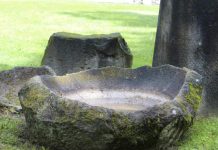The incident of Khian Sea waste disposal – A large amount of garbage is shipped from wealthy nations to poorer nations in Africa, Asia, and South America every year for recycling. A recycling infrastructure that is locally developed is typically more expensive than one that is exported. Furthermore, it reduces landfills and offers additional income to importers. There is a requirement to recycle waste, but it is rarely done. Environmental degradation and serious health risks result from incineration or illegal dumping of these wastes.
Despite waste exports from industrialized nations to developing ones being unnoticed and uncared-for the phenomenon, one incident in the 1990s put a spotlight on this unfair trade practice. A municipal waste incinerator operated by the city of Philadelphia since the 1970s burned its trash, and the ash was sent to a landfill in New Jersey.
A high amount of arsenic, cadmium, lead, mercury, dioxin and other toxins were present in the ash, and New Jersey decided to stop accepting the ash in 1984. Incinerator ash shipments were rejected by six other states, leaving Philadelphia in a bind. Every year, 180,000 tons of the stuff are produced in the state, but no place can be found to dispose of it. A less strict environmental standard country was chosen as the location for the operation.

A $6 million contract was signed in 1986 with Joseph Paolino and Sons to remove the ash. A company named Amalgamated Shipping Corp and Coastal Carrier Inc owned a cargo ship named Khian Sea, which Paolino and Sons then hired. Over 14,000 tons of ash were loaded onto Khian Sea on August 31, 1986, and it left port for the Bahamas.
The Bahamas government turned away the ship after the environmental group Greenpeace notified them of the waste’s nature before the ship could reach its destination. Aiming to dump its cargo somewhere in the Atlantic, the Khian Sea wandered all over the ocean for 14 months. Getting paid and completing the assignment was the company’s top priority. The toxic cargo was not accepted by any of the nations it approached.
A number of countries turned away the ship, including Dominican Republic, Honduras, Panama, Bermuda, Guinea Bissau, and Dutch Antilles. Also, the ship returning to Philadelphia was not possible.
The Khian Sea was finally taken in December 1987. The Haitian government received permission to dump the fertilizer near the town of Gonaives after being informed the goods were fertilizer. Once again, Greenpeace played spoilsport by alerting the Haitian government of the true cargo’s contents just after the crew had begun unloading the ash onto the beach.
Khian Sea was ordered to reload the garbage and take it away by the government once they realized they had been duped. Approximately 4,000 tons of ash had been dumped on the beach by then. There was a large pile of loose ash left behind by the Khian Sea as it slipped quietly at night.
The Khian Sea searched for a place to dump its toxic load after leaving Haiti. It then visited Senegal, Morocco, Yugoslavia, Sri Lanka, and Singapore. Each of those countries was bribed unsuccessfully by the shipping company to take the ash. Its name changed twice during their nightmare odyssey, from Felicia to Pelicano, but the original identity of the ship was never concealed.
It tried to negotiate with a nearby county, but no one would accept the load. Eventually, the ship returned to Philadelphia in defeat. Khian Sea had to sail again after a mysterious fire destroyed the pier in the Delaware River while anchored.
The ship finally arrived in Singapore in November 1988. There had been a mysterious disappearance of its cargo. It would take years for the captain of the Khian Sea, now Pelicano, to admit in court that the ash had been dumped into the Atlantic and Indian oceans against international law. It was found that two owners of Khian Sea/Pelicano had ordered the dumping and had perjured themselves. In 1992, the ship was scrapped.
While the size of the mound had reduced significantly, the 4,000 tons of ash that were deposited in Haiti remained on the beach. Each year, the wind and rain destroy a few dozen tons. After Greenpeace and other activists pressured Eastern Environmental Services, one of whose principal owners was responsible for dumping the trash in Haiti, the company agreed to pick it up. Ash was buried in a landfill in Pennsylvania the following year after it was loaded onto a barge.







